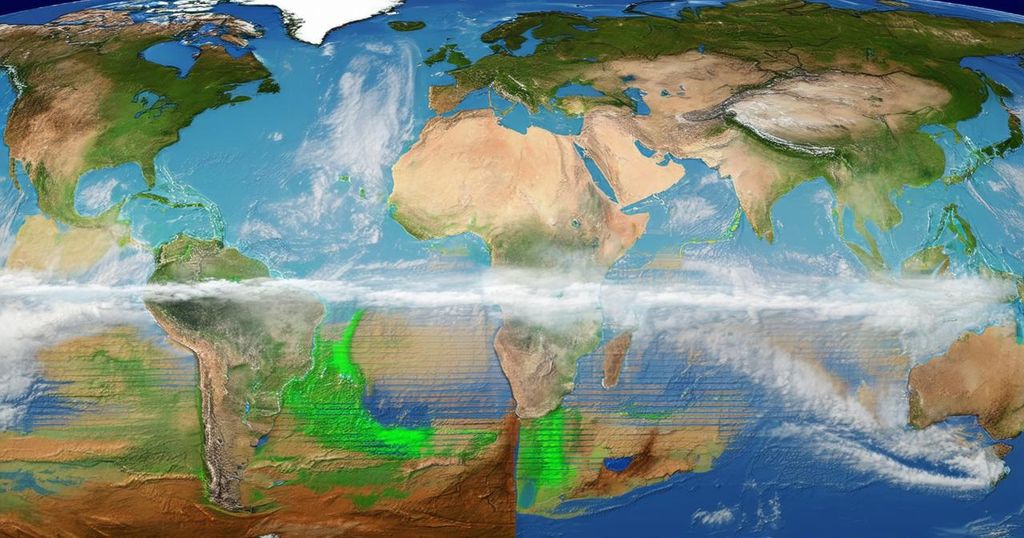A recent study reveals that the El Niño oscillation, responsible for significant weather pattern changes globally, has existed for at least 250 million years, often exhibiting greater intensity than current oscillations. Researchers utilized climate modeling techniques to analyze historical oscillatory behavior, emphasizing the roles of ocean temperature and surface winds. Their findings stress the importance of understanding past climatic conditions to enhance future climate predictions.
Recent research conducted by Duke University scientists indicates that the El Niño oscillation, a significant climatic phenomenon characterized by patterns of warm ocean water in the tropical Pacific, has been active for at least 250 million years. The study, published in the Proceedings of the National Academy of Sciences, suggests that these historical oscillations were often more powerful than those observed today. By employing advanced climate modeling techniques, the researchers were able to simulate climate conditions from ancient periods, despite the computational challenges associated with such extensive temporal scales. Their simulations reveal that the oscillation’s magnitude varied according to the thermal structure of the ocean and the dynamics of surface winds, highlighting the crucial impact of atmospheric conditions on climatic phenomena. Shineng Hu, an assistant professor at Duke’s Nicholas School of the Environment, emphasized that their findings demonstrate the necessity of understanding both past and present climatic factors to accurately predict future climate changes. This study underscores the importance of considering not just ocean temperatures but also the role of atmospheric noise, which can significantly influence oscillation strength. The researchers contend that a deeper understanding of these historical patterns is essential for making reliable forecasts about climate change going forward.
The El Niño Southern Oscillation (ENSO) is pivotal in influencing global weather patterns, acting as a significant driver for both extreme weather and climate variability. El Niño is marked by the warming of ocean surface temperatures in the eastern Pacific, while its counterpart La Niña is characterized by cooler temperatures. Historically, these oscillations have been studied primarily in the context of contemporary impacts; however, recent studies suggest that their origins and variations date back hundreds of millions of years, prompting researchers to investigate their historical magnitude and impact. This need to understand past oscillatory behaviors is driven by concerns over current climate change patterns and their potential escalation due to atmospheric and oceanic interactions.
The study conducted by Duke University researchers reveals that the El Niño oscillation has a long history, likely exceeding 250 million years, with oscillations often exceeding current magnitudes. This highlights the significance of historical climatic patterns in making future climatic projections. The interplay between ocean thermal structure and atmospheric winds is crucial for understanding the complexities of ENSO, suggesting that comprehensive studies of past climates are essential for informing future climate science.
Original Source: www.eurekalert.org






